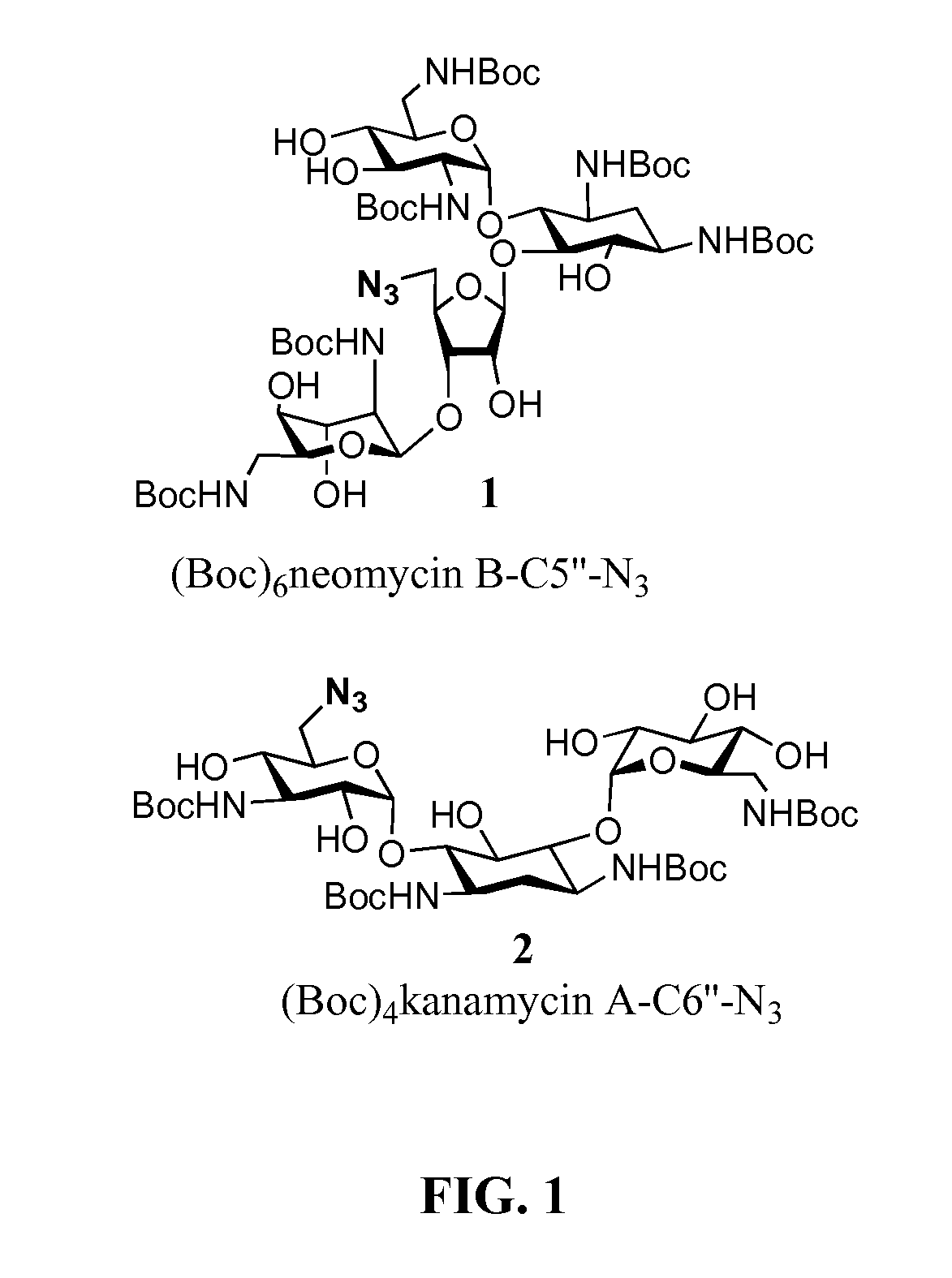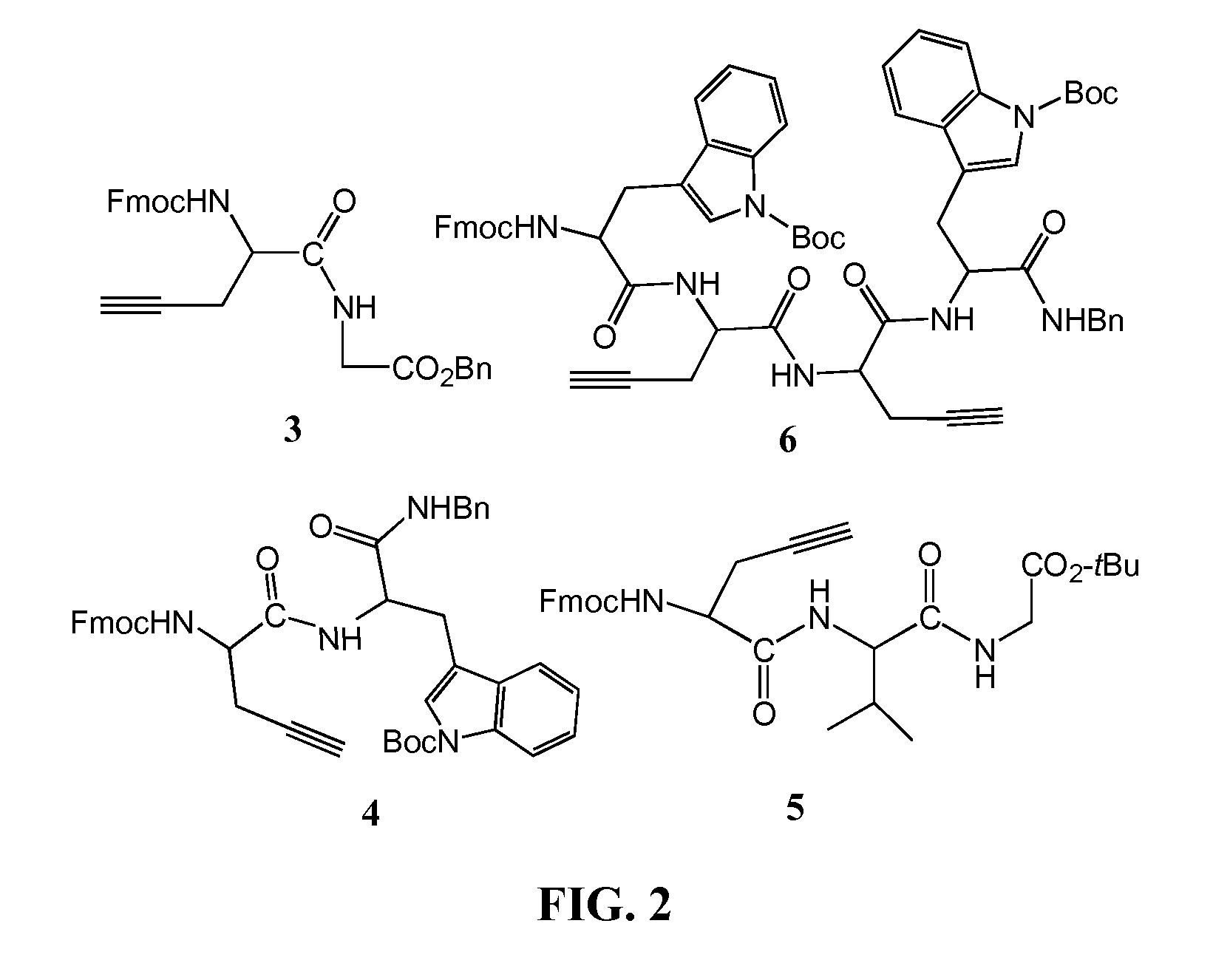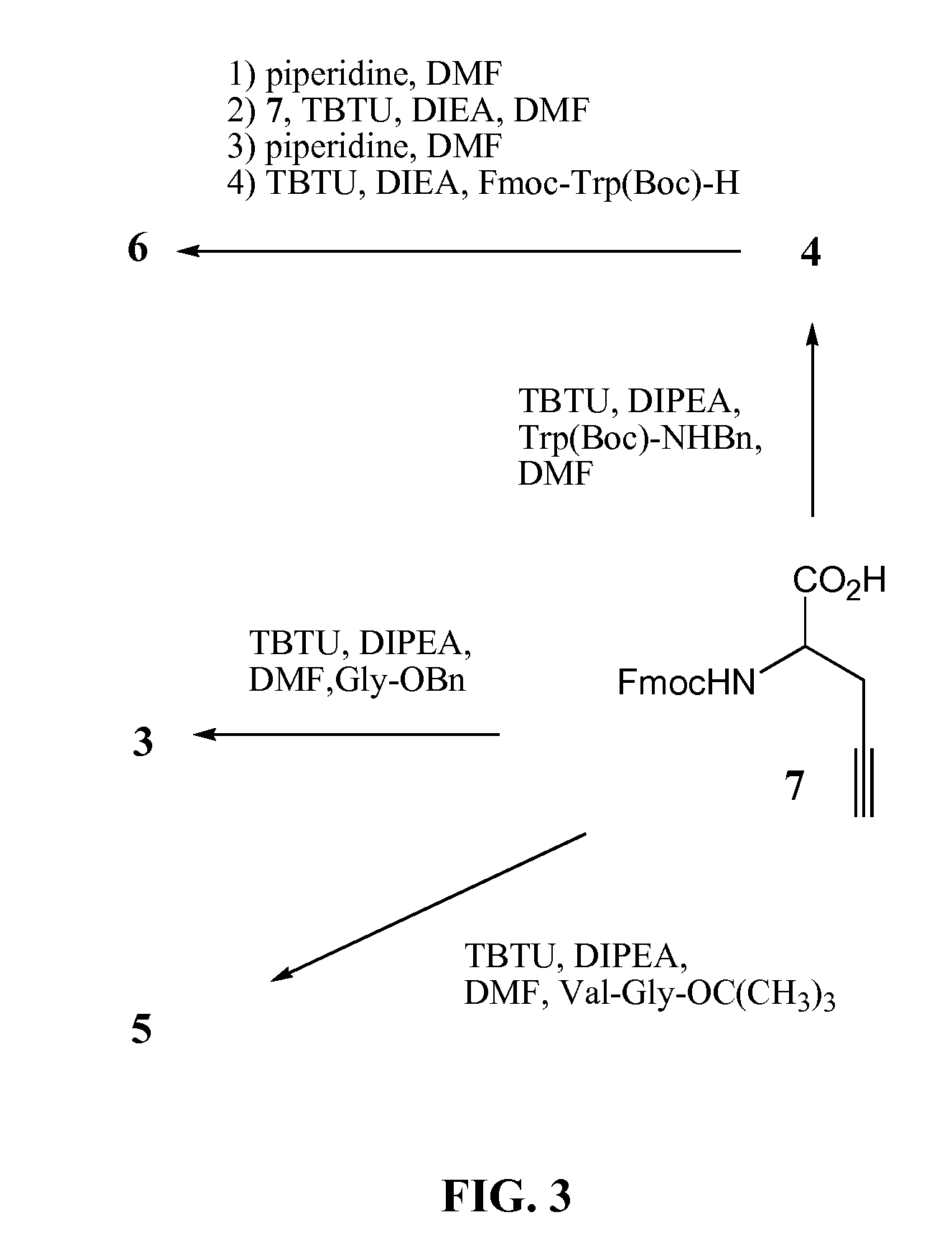Triazole-based aminoglycoside-peptide conjugates and methods of use
- Summary
- Abstract
- Description
- Claims
- Application Information
AI Technical Summary
Benefits of technology
Problems solved by technology
Method used
Image
Examples
example 1
Materials and Methods for Examples 2-7
[0096]NMR spectra were recorded on a Brucker Avance 300 spectrometer (300 MHz for 1H NMR, 75 MHz for 13C) and AMX 500 spectrometer (500 MHz for 1H NMR). Optical rotation was measured at a concentration of g / 100 mL, with a Perkin-Elmer polarimeter (accuracy)(0.002°. GC-MS analyses were performed on a Perkin-Elmer Turbomass-Autosystem XL. Analytical thin-layer chromatography was performed on precoated silica gel plates. Visualization was performed by ultraviolet light and / or by staining with ninhydrine solution in ethanol. Chromatographic separations were performed on a silica gel column by flash chromatography (Kiesel gel 40, 0.040-0.063 mm; Merck). Yields are given after purification, unless differently stated. When reactions were performed under anhydrous conditions, the mixtures were maintained under nitrogen. Compounds were named following IUPAC rules as applied by Beilstein-Institute AutoNom (version 2.1) software for systematic names in org...
example 2
Preparation of Neomycin and Kanamycin A Trizole Conjugates
[0097]Neomycin B and kanamycin A were initially selected for modification. As a method of ligation, the inventors selected the Sharpless modified Huisgen [3+2] cycloaddition reaction between a terminal peptide-based alkyne introduced in the form of propargylglycine (Pra) and an aminoglycoside-derived azide to generate substituted 1,2,3-triazoles, 1 (Scheme 1) (Vakulenko and Mobashery, 2003; Kolb and Sharpless, 2003). Click chemistry techniques involving aminoglycoside-based azides are explained in Quader et al., 2007, incorporated herein by reference.
[0098]The single primary hydroxymethyl groups at the ribose moiety (5″-position) in neomycin B and at the 3-deoxy-3-amino-glucose moiety (6′-position) of kanamycin A were initially selected for introduction of the azido function. In order to be compatible with solution and solid phase peptide chemistry using the Fmoc-strategy, all remaining amino functions in neomycin B- and kana...
example 3
Click-Based Glycoconjugation of Azide 1 with Solid Phase Supported Peptides
[0106]Solid phase peptide synthesis was performed on an Rink amide resin (Gogoi et al., 2007) using the Fmoc-strategy (Merrifield, 1986). Coupling of Fmoc-amino acids was performed with TBTU in DMF as solvent. The inventors selected dipeptide resin-Leu-Pra-NFmoc and tripeptide resin-Leu-Leu-Pra-NFmoc as model peptides and 1 as azide component to study the click-based cycloaddition reaction on solid support (FIG. 8). Exposure of azide 1 to resin-Leu-Pra-NFmoc and resin-Leu-Leu-Pra-NFmoc both in the presence of CuI, sodium ascorbate and DIEA in a ternary solvent containing DMF / water / CH3CN afforded conjugates 24 and 25 after resin cleavage. The addition of sodium ascorbate improved the yield significantly suggesting that it is capable of stabilizing Cu in its +1 oxidation state (Rostovtsev et al., 2002; Sonogashira et al., 1975). Subsequently, the deblocked peptides were purified by HPLC and characterized by NMR...
PUM
| Property | Measurement | Unit |
|---|---|---|
| Density | aaaaa | aaaaa |
| Electrical resistance | aaaaa | aaaaa |
| Minimum inhibitory concentration | aaaaa | aaaaa |
Abstract
Description
Claims
Application Information
 Login to View More
Login to View More - R&D
- Intellectual Property
- Life Sciences
- Materials
- Tech Scout
- Unparalleled Data Quality
- Higher Quality Content
- 60% Fewer Hallucinations
Browse by: Latest US Patents, China's latest patents, Technical Efficacy Thesaurus, Application Domain, Technology Topic, Popular Technical Reports.
© 2025 PatSnap. All rights reserved.Legal|Privacy policy|Modern Slavery Act Transparency Statement|Sitemap|About US| Contact US: help@patsnap.com



